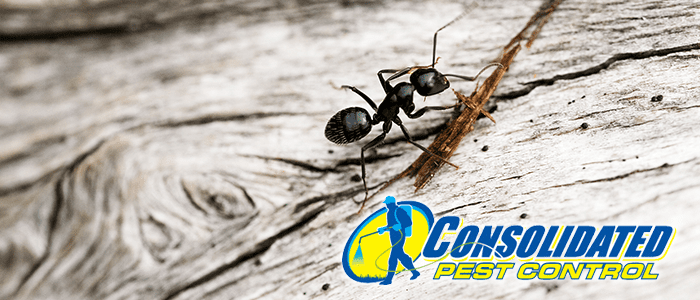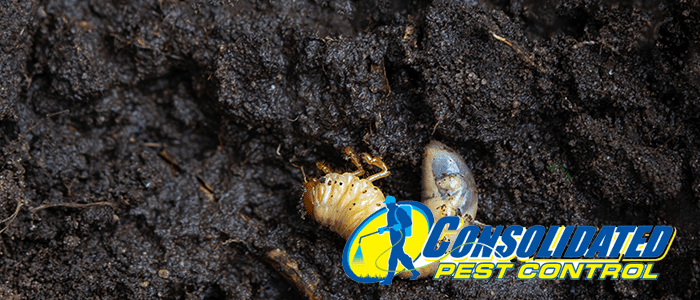
When we think about pests, our minds often jump to the common culprits: roaches scurrying in the dark, ants marching in a line, or the buzz of a mosquito. But the world of pests is vast and filled with fascinating secrets. Consolidated Pest Control invites you to delve into some of the most amazing and little-known facts about these creatures that share our planet.
1. The Architectural Marvel of Termites
Termites are often dreaded for their destructive nature, but they are also master architects. In Africa and Australia, some termite species build mounds that can reach up to 30 feet high, equivalent to a two-story building. These mounds are not just piles of dirt; they are complex structures with a ventilation system that maintains a constant temperature inside, an incredible feat of natural engineering.
2. Ants and Their Super Strength
Ants might be tiny, but they are incredibly strong. They can carry objects 50 times their body weight with their mandibles. If a human had the same strength relative to their size, they could lift a medium-sized car. This super strength is due to their small size, as the cross-sectional area of their muscles is proportionally larger compared to their body size.
3. The Mysterious Navigation of Cockroaches
Cockroaches are one of the oldest insects, having been around since the time of dinosaurs. They have an uncanny ability to navigate in the dark, using their sensitive antennae as sensors. These antennae can detect slight changes in air currents, helping them avoid obstacles and predators even in total darkness.
4. The High-Speed Escape of Houseflies
Houseflies are incredibly agile fliers. They can fly at speeds up to 5 miles per hour, and their wings beat about 1,000 times per minute. But their most impressive feature is their ability to process visual information and react in less than 100 milliseconds, which is why catching them can be so challenging.
5. The Underwater Silk Weaving of Water Spiders
The water spider, or Argyroneta aquatica, is the only species of spider that lives entirely underwater. They create a dome-shaped web, which they fill with air carried down from the surface, creating an underwater air bubble where they can live and store food. This adaptation is unique among spiders and showcases the diversity of survival strategies in the pest world.
6. Mosquitoes’ Preference for Certain People
Ever wondered why mosquitoes seem to bite some people more than others? Research has shown that mosquitoes are more attracted to individuals with a higher body temperature and those who exhale more carbon dioxide. Additionally, factors like blood type, pregnancy, and even the consumption of beer can make someone more attractive to these pesky insects.
7. The Lifespan of a Queen Termite
Queen termites have one of the longest lifespans of any insect. Some species’ queens can live for decades, with the longest recorded lifespan being over 50 years. This is remarkable considering most insects have a lifespan of only a few weeks to a year.
8. The Remarkable Memory of Bees
Bees are not just important pollinators; they also have an extraordinary memory. Honeybees can remember the locations of hundreds of flowers, their layouts, and the best times to visit them. Their ability to navigate and remember routes is a subject of extensive study and marvel in the world of entomology.
9. The Lightning Speed of Dragonflies
Dragonflies are among the most skillful fliers in the insect world. They can reach speeds of up to 35 miles per hour! Not only are they fast, but they can also hover, fly backward, and change direction in an instant. This agility makes them formidable hunters in their natural habitats.
10. The Unique Communication of Silverfish
Silverfish, known for their love of starchy materials, have a unique way of communicating. They use pheromones to attract mates and can go through an elaborate courtship dance that involves weaving and touching antennae. This complex behavior is rare among such primitive insects.
11. The Camouflage Expertise of Stick Insects
Stick insects, or phasmids, are masters of disguise. Their ability to mimic twigs and leaves is so precise that predators often overlook them completely. Some species can even change color to match their surroundings, a trait they share with chameleons.
12. The Impressive Longevity of Cockroaches
Some species of cockroaches can live for an astonishingly long time without food or water. The American cockroach, for instance, can survive up to a month without food and about two weeks without water. This resilience is one of the reasons why they are so successful in various environments.
13. The Blood-Only Diet of Bed Bugs
Bed bugs are unique in that they feed exclusively on blood. This diet is uncommon among insects, with only a few species like mosquitoes sharing this trait. Bed bugs can also survive months without feeding, making them persistent pests in human habitats.
14. The Vibrational Communication of Spiders
Some spiders, like the jumping spider, communicate using vibrations. These vibrations, created by movements or tapping on surfaces, are used during courtship rituals. The complexity of these vibrational signals is a subject of fascination for many arachnologists.
15. The Wasp That Turns Cockroaches into Zombies
The emerald jewel wasp has a bizarre and fascinating way of reproducing. It stings a cockroach, injecting venom that turns the roach into a passive zombie. The wasp then leads the roach to its nest, where it lays an egg on it. The roach remains alive, serving as food for the emerging larva.
The world of pests is full of wonders that often go unnoticed. From the remarkable memory of bees to the zombie-creating wasps, these creatures exhibit behaviors and adaptations that are both fascinating and crucial to our understanding of the natural world. At Consolidated Pest Control, we aim to balance the need for pest control with the respect and awe these creatures deserve. Understanding their unique traits not only helps in effective pest management but also deepens our appreciation for the complex tapestry of life on Earth.
Remember, every pest has a story, an adaptation, and a role in our ecosystem. The next time you encounter one, you might just recall one of these incredible facts!








